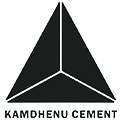Ready Mix Concrete (RMC)
Kamdhenu Cement used in ready-mix concrete ensures a cleaner workplace causes minimal disturbance to its surroundings, makes its utility more significant at sensitive localities/sites in contrast to the conventional methods, and above all, proves more cost-effective.
Ready mix concrete is a construction material manufactured in group plants to meet specific details. The concrete is then delivered “ready to use” to construction sites. It is a versatile material that can be cast into just any shape and structure. It can be blended with various admixtures that affect its chemical properties.
Manufacturing Process
Ready-Mix-Concrete is made out of three fundamental parts: cement, aggregates, and water. Cement is the primary component that produces strength out of all of these components.
Cement, water, and aggregates are mixed together during the production of ready-mix concrete. The aggregates are coated with and held together by a paste made of water and powdered cement. The mixture then hardens and sets as a result of hydration. To make the process successful, the proportions between the various ingredients must be exact.
The method involved with blending concrete is one of the main parts of the manufacturing system. It consumes the most energy and is the distinctive fundamental variable between various sorts of concrete.
In a concrete plant, concrete is produced. The manufacturing system is comprised of two main phases. The first step for the suppliers is to acquire specific information from the client. It enables them to calculate the necessary concrete production amounts. They can even use a concrete calculator to provide an exact estimate.
Blending is the next stage. The components for concrete are purchased separately and mixed to a specific degree. They are then filled into a blender, which pivots when the water is poured into it.
After this, the concrete blender doesn’t stop while it goes to the site. Specialized tools are utilized to blend ready-mix-concrete to specific detail. After the process of mixing the concrete, it needs a specific measure of time to set. If it is mixed for too long, it may not be set correctly.
While utilizing a concrete blender, an expert follows explicit equations for blending the concrete. The combination should be carefully estimated in order to keep away from quality conflicts.
Advantages
- Reduced construction time and cost
- Lower maintenance costs
- Eco-friendly
- Top-notch quality
- Versatile in nature
Highlights
- Delivering exceptional service in the industry and creating quality & permanent bonds with our customers.
- Implementing technologies to produce higher results.
- Reaching out to all towns and cities of the country.
- Quality as per BIS standard.



